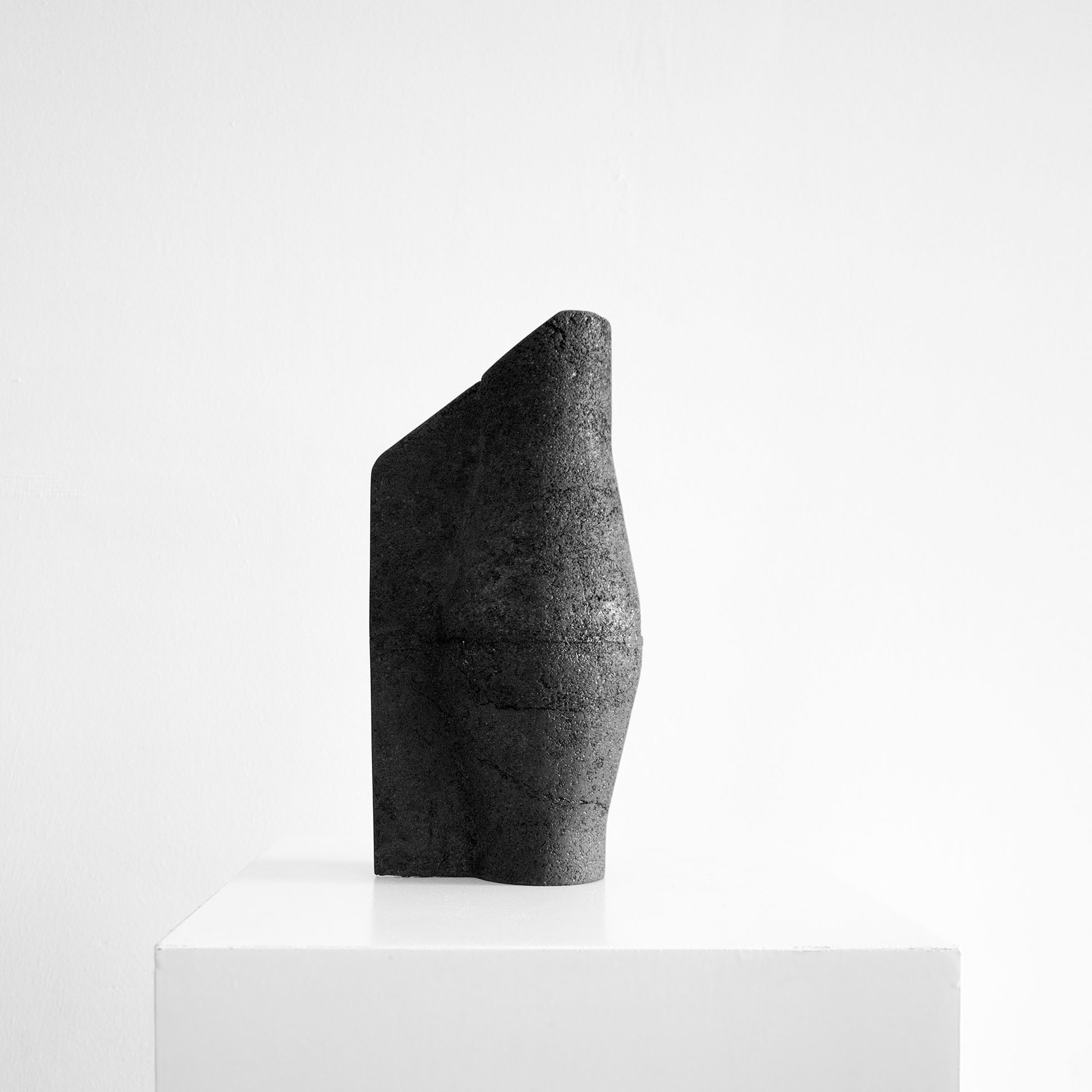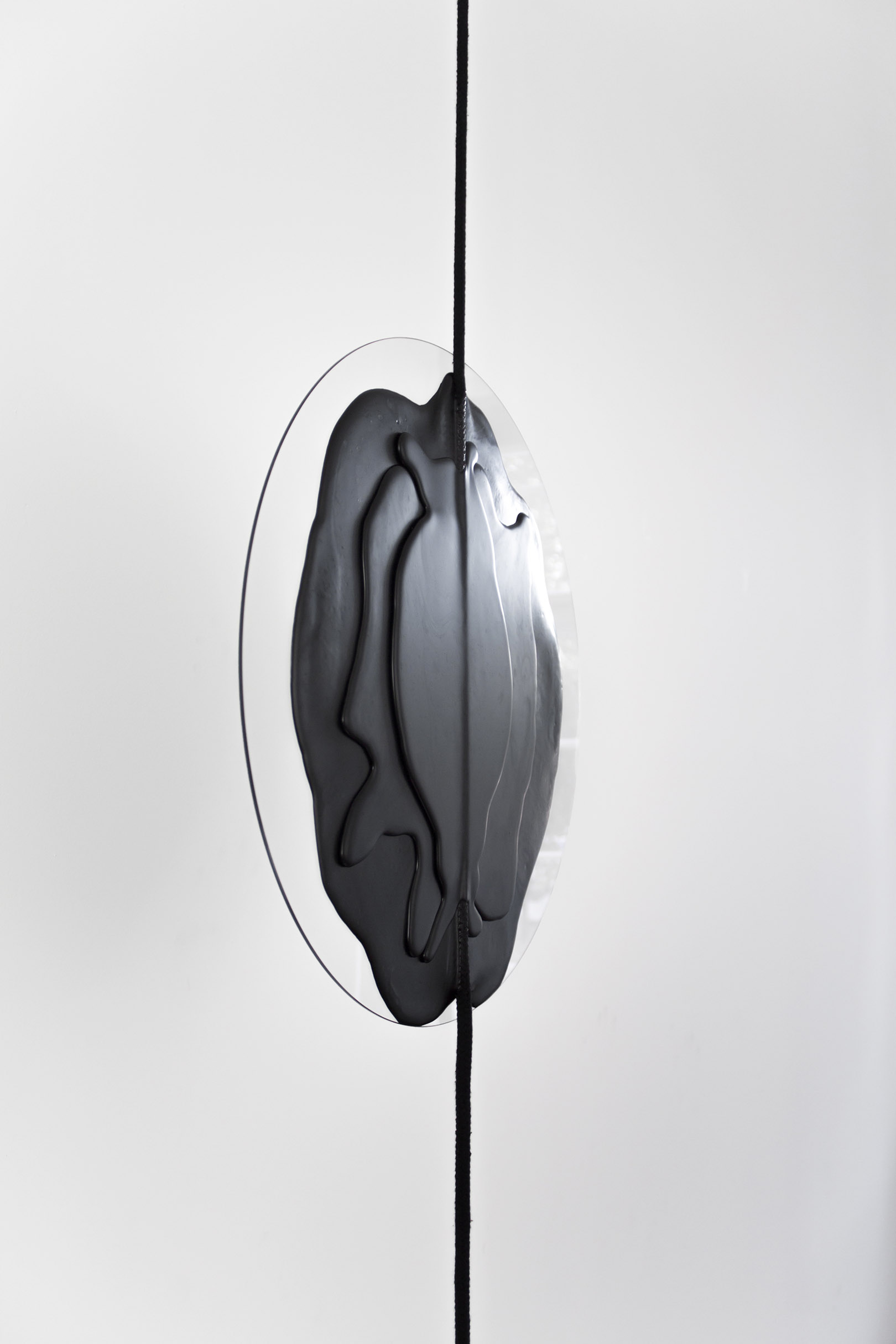Reprising forgotten, primordial materials–The work of Lapatsch Unger
By Purva Chawla
What draws me to Lapatsch|Unger's Forgotten Collection isn't just its commitment to a single, luscious black matter. Nor is it the spectacular variety of forms and experiences created within two editions of the project. What I find myself drawn to most, is the project's resurrection of primordial and prehistoric materials like Birch Tar or Pitch, and Charcoal, while simultaneously responding to the most perplexing challenge in design today– the omnipresence and essentiality of resins and binders, which are largely unsustainable.
In their project, the Forgotten Collection, Berlin-based designer duo Anja Lapatsch & Annika Unger look to anthropology, to ancient cultures and their alchemy, arriving at materials and methods for objects that are biodegradable, non-toxic and ripe circularity.
The Forgotten Collection by Lapatsch|Unger, Second edition
Woven waterproof cap made with pitch covered cotton rope, The Forgotten Collection by Lapatsch|Unger, First edition
Materials and Time | The Forgotten Collection
As early as the Paleolithic era, Birch Tar or Birch Pitch was derived from the dry distillation of Birch bark and used as an adhesive, water-proof coating, and even as a disinfectant. In the first edition of the Forgotten Collection, Lapatsch|Unger replicated this process, and used the tar arrived at as binder, coating, and pigment for a variety of beautiful, sculptural objects and installations. Particularly inspiring to the duo was how this "first humanmade material" had been used for the gluing of spearheads and the sealing of the first clay vessels. This prehistoric functionality and these forms are reflected in the mood and range of objects in the Forgotten Collection.
Dry distillation of wood, The Forgotten Collection by Lapatsch|Unger
Today, as the condemnation of synthetic, toxic resins becomes louder, and the search for starch and cellulose-based natural resins and bioplastics becomes more intense, it is exciting to think that a viable solution might be drawn from our past. The Forgotten Collection is Lapatsch|Unger's investigation of natural, sustainable resins and composites, as much as it is their cultural reprisal of materials and forms they consider 'forgotten.'
Birch Tar/Pitch–resurrecting a prehistoric, natural resin and binder, The Forgotten Collection by Lapatsch|Unger, First Edition
In the second edition of this project, the duo focussed on the second material remnant of the dry distillation process of wood–Charcoal. This time they worked with Bamboo charcoal (created through pyrolysis/distillation in their self-made kiln) and Shellac (a natural resin secreted by the female Lac bug, on found on trees in forests in India and Thailand)–both of which were frequently used together in ancient Asian artistry.
Combining Bamboo charcoal and Shellac into a malleable, textured material, a series of sophisticated, yet primeval and timeless objects were cast. True to their commitment to sustainability, each of these objects can be broken, melted and recast into another form. This 'break-and-remake' model feels plausible today and yet is future-oriented. With a simple, and uniform, deep black materiality, it seems entirely possible that one object in the Forgotten Collection will be able to transform to another someday.
Vessels from The Forgotten Collection by Lapatsch|Unger, Second Edition
'Break-and-Remake', The Forgotten Collection by Lapatsch|Unger, Second Edition
Design and Detailing
Graduates of product and process design from the University of Arts in Berlin, Anja Lapatsch and Annika Unger think of themselves as curious 'Cultural Miners'. Research into cultural phenomena, materials and craft, and both factual and fictional storytelling form the backbone of their work.
Mirror, The Forgotten Collection by Lapatsch|Unger, First edition
The duo thinks of their objects as vessels of information, a fact that reflects in works from the Forgotten Collection. Possessing an inexplicable sense of depth, the objects are both simple and sophisticated. The synchronized movement of hundreds of Birch Pitch 'strings' in a kinetic installation; the delicate placement of mirror and glass within irregular chunks of velvety black material; and the cleverly detachable legs of a crusty, rock-like table. These small moments give away the detailing and craft of making behind the Forgotten Collection.
Vessels, and table with threaded, detachable legs–The Forgotten Collection by Lapatsch|Unger, Second edition
Table with threaded, detachable legs–The Forgotten Collection by Lapatsch|Unger, Second edition
Relevance Today
As we firmly establish ourselves as protagonists in the Anthropocene, concern about the impact we create, and the footprint we will leave behind us is growing. The materials we choose to use, conserve, reuse, and enable to biodegrade, as well as those we steer away from the earth owed to their toxicity, will dominate the landscape of design.
Also crucial will be how objects and materials capture and represent this current age, and our culture, while also playing a role in the preservation and perpetuation of legacies from the past. The Forgotten Collection–drawing from the past, while solving for the present and future–is a success in how it straddles and addresses both.
Mirror, The Forgotten Collection by Lapatsch|Unger, First edition
Readers if you would like to continue to follow the work of Lapatsch | Unger, click here.

















